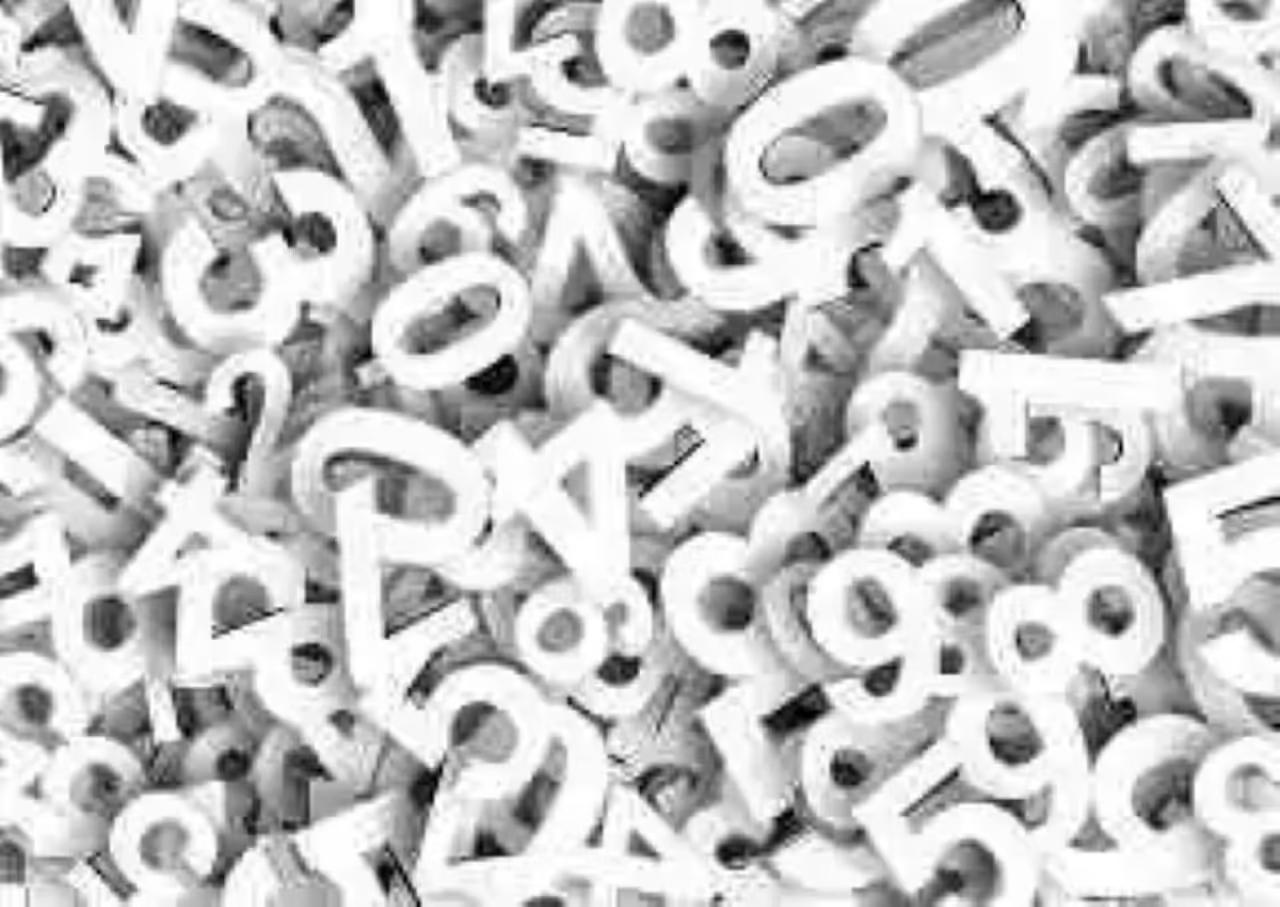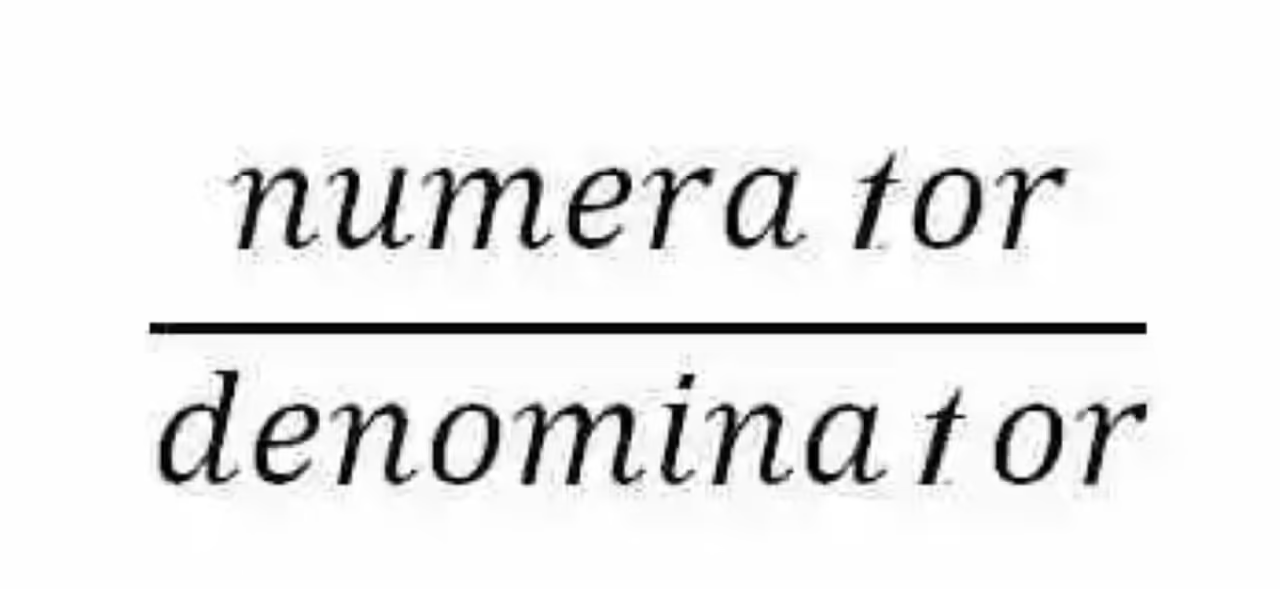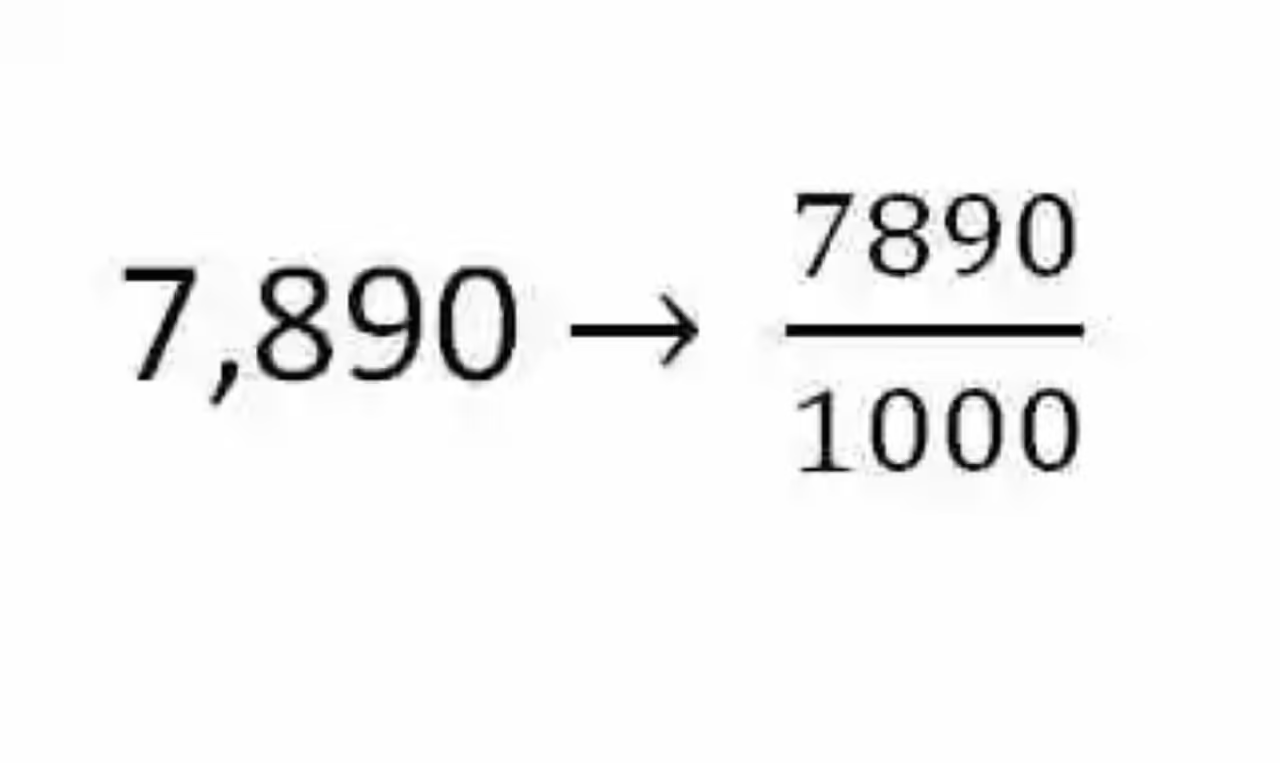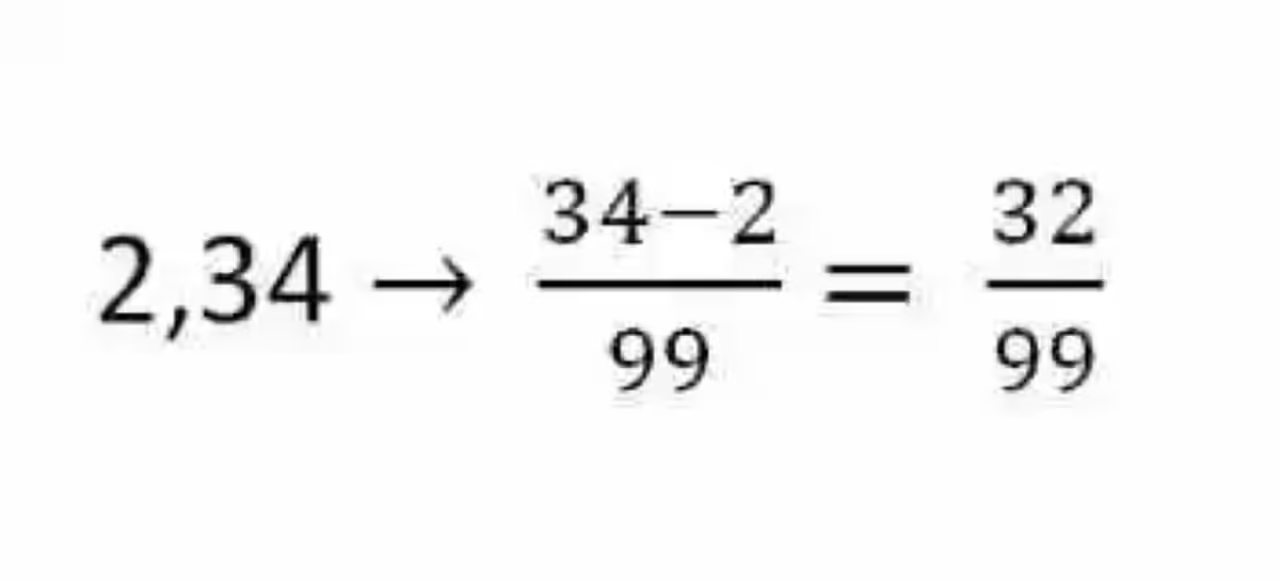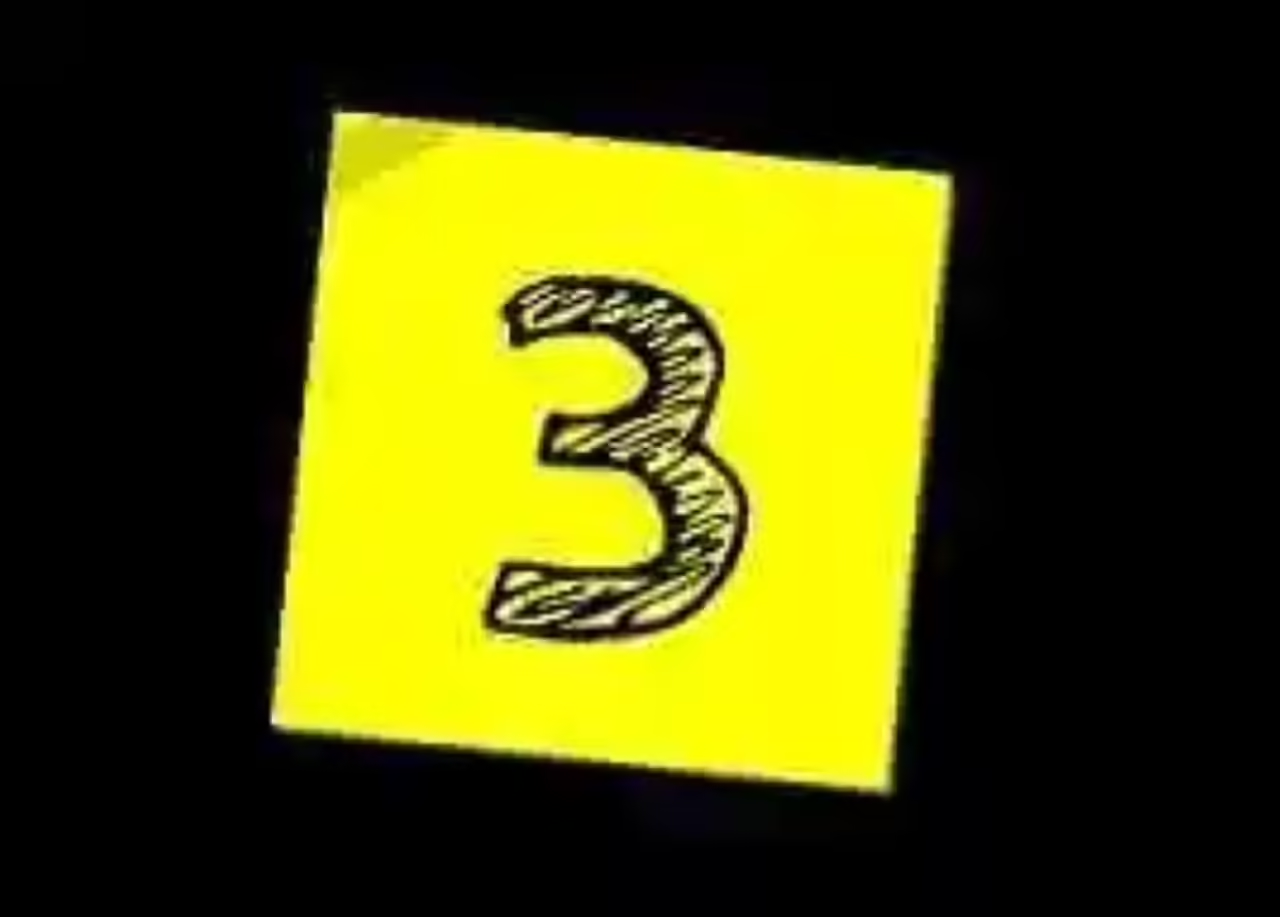Perhaps the most convenient thing to do, before approaching an explanation about the Fraction generating a decimal number, as well as the procedure indicated to find it, is to revise some definitions that will allow understanding this operation within its adequate mathematical context.
Fundamental definitions
In this sense, it may also be prudent to delimit this theoretical revision to two specific notions: the respective definitions of Fractions and Decimal Numbers,since these are expressions or numerical elements directly related to any operation, whose purpose is to determine the fraction from which a decimal number comes. Next, each one of these concepts:
Fractions
In this way, we will begin by saying that Mathematics has defined the fraction as the numerical expression by means of which rational numbers are represented. Consequently, the fraction will serve to refer to a certain fractional or non-exact quantity. Likewise, the fraction will be made up of two elements: the numerator, whose function will be to indicate how many parts of the whole the fraction represents; and the denominator, which will fulfill the task of showing how many parts the whole is divided into:
Decimal numbers
For their part, decimal numbers have been generally conceived by Mathematics as those numerical elements by means of which non-exact quantities are given written expression, which may well constitute rational or irrational numbers. On the other hand, the mathematical discipline has also indicated Decimal Numbers as numerical elements made up of two different parts -one integer and the other decimal- that have been explained in the following way:
Integer part: also known as Units, this integer part of the decimal number will be constituted by an integer, which can be positive, negative, or even zero. Since it is made up of numerical elements belonging to the Decimal Numbering System, the numbers found in the units have a positional value, counting from right to left between units, tens, hundreds, units of a thousand, tens of a thousand, and so on.
Decimal Part: Likewise, within the Decimal Number, a decimal part may be counted, which is also called incomplete Units. It is composed by a number smaller than the unit, which in the Numeric Line will be located between zero and one. Its elements also have a positional value, counting from left to right the tenths, hundredths, thousandths, ten thousandths, etc.
Both parts will be -always and without exception- separated by a comma. To the left of this symbol the units, or whole part of the decimal number,should be annotated, while to the right it will correspond to arrange the incomplete units, that is to say, the decimal part of the number. There are mathematical currents that choose to use the semicolon instead of the comma, but the disposition of the elements must be done in the same way.
Generatrix fraction of a decimal number
Once each of these concepts has been reviewed, it may be much easier to approach the definition of the Generatrix Fraction of a decimal number, which will simply be the fraction from which a decimal number has been generated.
In this order of ideas it is necessary to explain that the same non-exact quantity can be expressed both as a fraction and by means of a decimal number, as long as it is a rational number, that is to say,a number that when expressed as a decimal counts in its incomplete units or with a limited decimal, or with an unlimited periodic decimal, either pure or mixed.
Otherwise, that is, if we had an unlimited non-periodic decimal number, that is, where its incomplete units extend towards infinity without any series being repeated in them,it would be a decimal number referring to a rational number, and therefore this number could never be represented as a fraction. Consequently, only rational numbers can have both a decimal and a fractional expression.
Cases and methods to find the generative fraction of a decimal number
Therefore, at the moment of trying to establish which is the generatrix fraction of a decimal number, it will be the characteristics of the incomplete units of this number which will say if in effect the decimal expression counts or not with a generatrix fraction, that is to say if in the first place it is a rational number or not.
Likewise, the characteristics of the incomplete units of the decimal number will be those that indicate which is the procedure to follow when finding the Generatrix Fraction, since the procedures will vary according to whether it is a limited decimal, a pure periodic decimal or a mixed periodic decimal. Here is the method that should be used in each case:
According to what the different mathematical sources indicate, a limited decimal number is one that has a precise number of elements in its incomplete units; therefore, it is usually the product of an exact division between two integers. Likewise, when finding a number with these characteristics,it is concluded that it is a rational number, that is, that it does have a generatrix fraction. Therefore, when it comes to finding this fraction, from which the limited decimal number comes,each one of the following steps must be followed:
- Determined that it is a limited decimal, at the moment of finding its generatrix fraction, we will begin by suppressing the comma of the decimal number, in order to convert it into an integer.
- Next, this integer will be used as the numerator of the generatrix fraction.
- As for the denominator of this fraction, it will be a number conformed by the unit, and as many zeros as elements have had in their incomplete units the decimal number from which the generatrix fraction is being found.
- Once the numerator and denominator have been found, the operation is considered resolved.
However, perhaps the best way to complete an explanation of how to find the generatrix fraction of a limited decimal number is through the presentation of a concrete example, which allows us to see in a practical way how each of these steps are fulfilled.Here is the next exercise:
Find the generatrix fraction of the following limited decimal: 7,890
Generatrix fraction of an unlimited pure newspaper decimal
On the other hand, Mathematics will consider that the pure periodic unlimited decimal numbers will be those that in their incomplete units have series of numbers, that in addition to repeating themselves infinitely, begin to do it immediately after the comma that separates the integers from the decimals. In this case, we can also speak of rational numbers, so that the decimal number does have a generatrix fraction.
- However, the steps followed to find it will be different from those followed when it comes to a pure decimal. Therefore, whenever you want to find the generating fraction of an unlimited pure periodic decimal number, you must follow these steps:
- The decimal number from which the generatrix fraction is to be found is taken and its comma is suppressed.
- Afterwards, only the incomplete units will be taken from this decimal number, and they will be placed in the numerator. The whole part of the decimal number will be subtracted from these incomplete units.
In the denominator as many numbers 9 will be placed as there are elements that have had the pure periodic unlimited decimal number in the period or series that repeated in its incomplete units, immediately after the comma.
However, in this case it may also be necessary to use a concrete example that allows us to demonstrate in a practical way how to proceed whenever we wantto find the generatrix fraction of a pure unlimited periodic decimal number, as shown in the following exercise:
Find the generating fraction of the following decimal number: 2.34
Generatrix fraction of an unlimited decimal number periodical mixed
Finally, it will also be necessary to point out that Mathematics conceives unlimited periodic mixed decimal numbers as those decimal numbers that in their incomplete units have series of numbers that are repeated every certain period, but whose appearance does not occur immediately after the comma, there being between this sign and the number that a number is repeated that does not, so these numbers are also known as unlimited impure newspapers, or semi-periodicals.
As for the correct way to find the generative fraction that this type of numbers have, as rational at the end, Mathematics has indicated that the steps listed below must be followed:
Given an unlimited periodic mixed decimal number, the first thing that must be done is to suppress the comma, in order to convert it into an integer number.
In the second place, the whole number obtained,from the whole part to the end of the first period, will be taken and placed in the numerator of the generatrix fraction.
3.- This number that has been placed in the numerator should be subtracted from all the numbers that make up the whole part and the ante-period.
4.- On the other hand, a number shall be placed in the denominator conformed by the following numbers: in principle, as many nines shall be placed as numbers can be counted in the period,which shall be followed by as many zeros as the ante-period counts, that is, the number of incomplete units that is not repeated, and that is located between the comma and the first period.
In the same way, a concrete example should be given, which allows us to see how this type of operation should be carried out:
Image: pixabay.com
